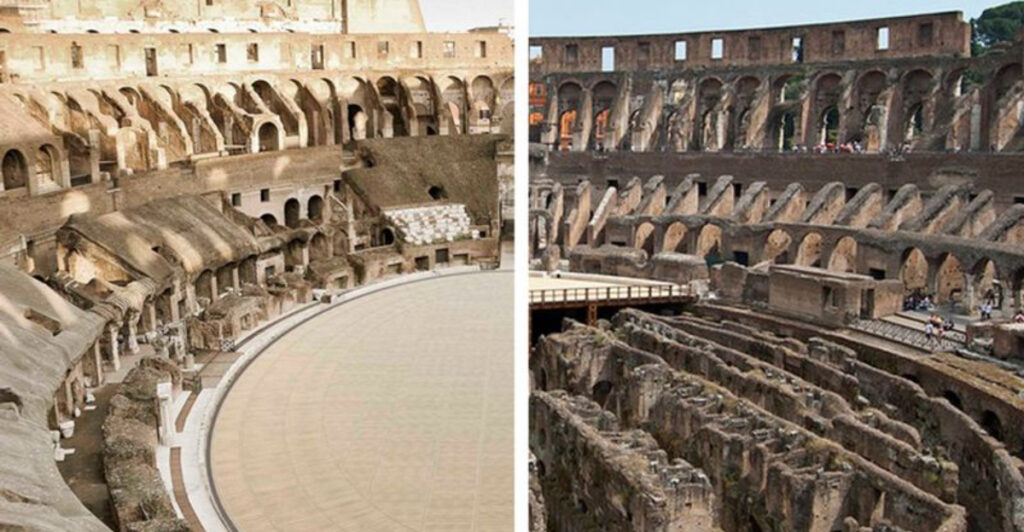Discover the incredible stories behind these 19 landmark restorations. From ancient temples to modern museums, each transformation stands as a testament to human ingenuity and dedication to preserving history.
Sagrada Familia, Spain

Sagrada Familia is an architectural masterpiece that has been in construction since 1882. Designed by Antoni Gaudí, its towers and intricate facades captivate millions. Restoration and construction continue to this day, blending Gaudí’s vision with modern techniques.
Every visit reveals new details, such as colorful stained glass windows that fill the interior with vibrant hues. The project is a living testimony to Gaudí’s genius and Barcelona’s cultural heritage.
Fun fact: Gaudí devoted the last 15 years of his life solely to this project, living in a workshop within the construction site.
The Parthenon, Greece
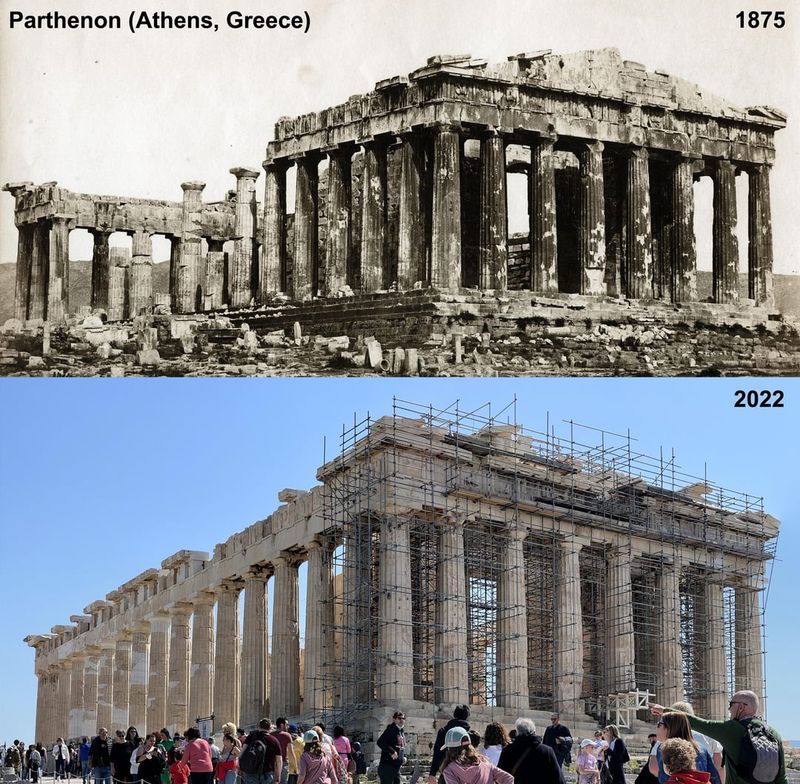
The Parthenon, a symbol of ancient Greece, has undergone extensive restoration efforts. Initially constructed in 447 BC, this iconic temple dedicated to Athena was marred by wars and natural disasters. The restoration process, initiated in the 1970s, involved meticulous analysis and use of original materials.
Today, visitors are greeted by its majestic columns that tell stories of ancient gods and heroes. The delicate balance between preserving authenticity and enhancing structural integrity makes this restoration a marvel.
Did you know? The Parthenon’s restoration required over 70,000 new marble blocks, each carefully carved to match the original.
Colosseum, Italy
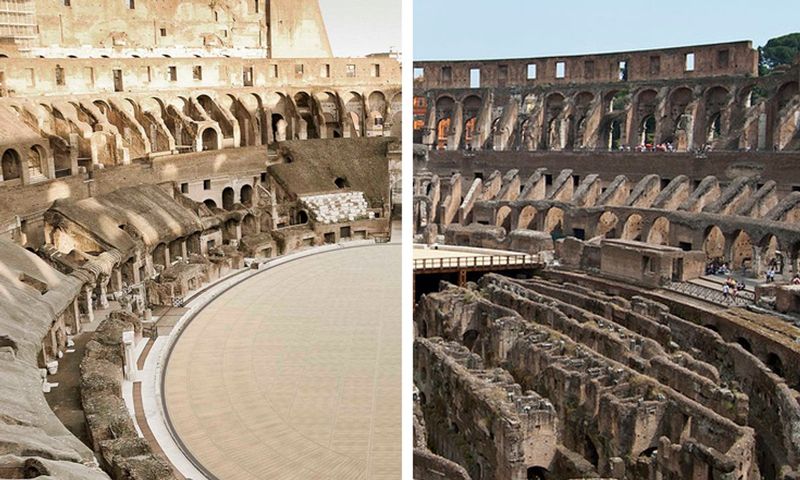
The Colosseum, a symbol of ancient Rome, stands as a testament to architectural innovation. Over the centuries, it faced earthquakes and stone robbers. Restoration efforts have focused on preserving its grandeur and improving accessibility.
Modern enhancements have allowed visitors to explore underground chambers and gladiatorial arenas. The blend of historical preservation and contemporary technology ensures its legacy endures.
Intriguing detail: The Colosseum once hosted naval battles by flooding the arena, showcasing Roman engineering prowess.
Machu Picchu, Peru
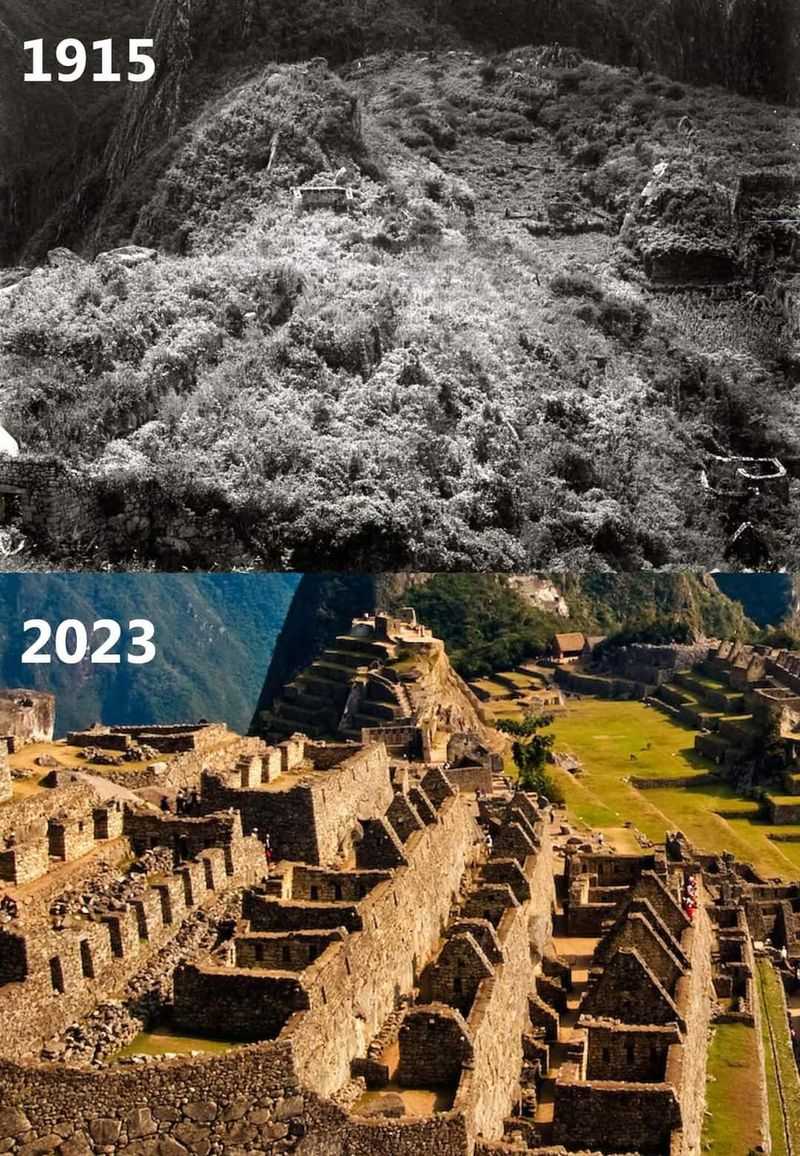
Machu Picchu, the lost city of the Incas, was rediscovered in 1911 by Hiram Bingham. Restoration efforts focus on preserving its intricate stone structures and terraced fields. The stunning location atop the Andes requires careful attention to environmental impact.
Today, Machu Picchu invites explorers to wander through its ancient pathways and temples. The breathtaking views and rich history create an unforgettable experience.
Historical tidbit: Machu Picchu was never discovered by the Spanish conquistadors, allowing it to remain a hidden gem until the 20th century.
Angkor Wat, Cambodia
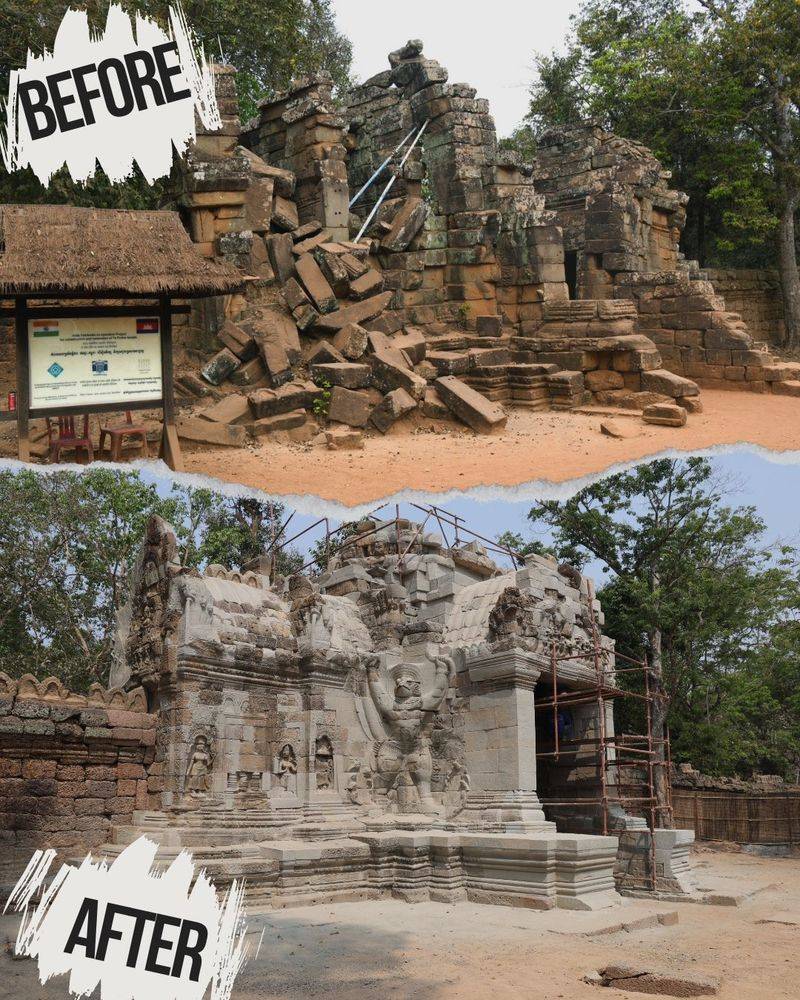
Angkor Wat, the pride of Cambodia, is the largest religious monument in the world. Built in the 12th century, it has undergone numerous restoration projects to revive its splendor. Intricate carvings and towering spires tell tales of Hindu mythology.
Painstaking efforts ensure that the temple’s intricate designs remain intact amidst tropical weathering. Visitors are mesmerized by its reflection in the surrounding moat.
Cultural note: Angkor Wat is so revered in Cambodia that it appears on the national flag, symbolizing the nation’s soul and identity.
Notre-Dame, France
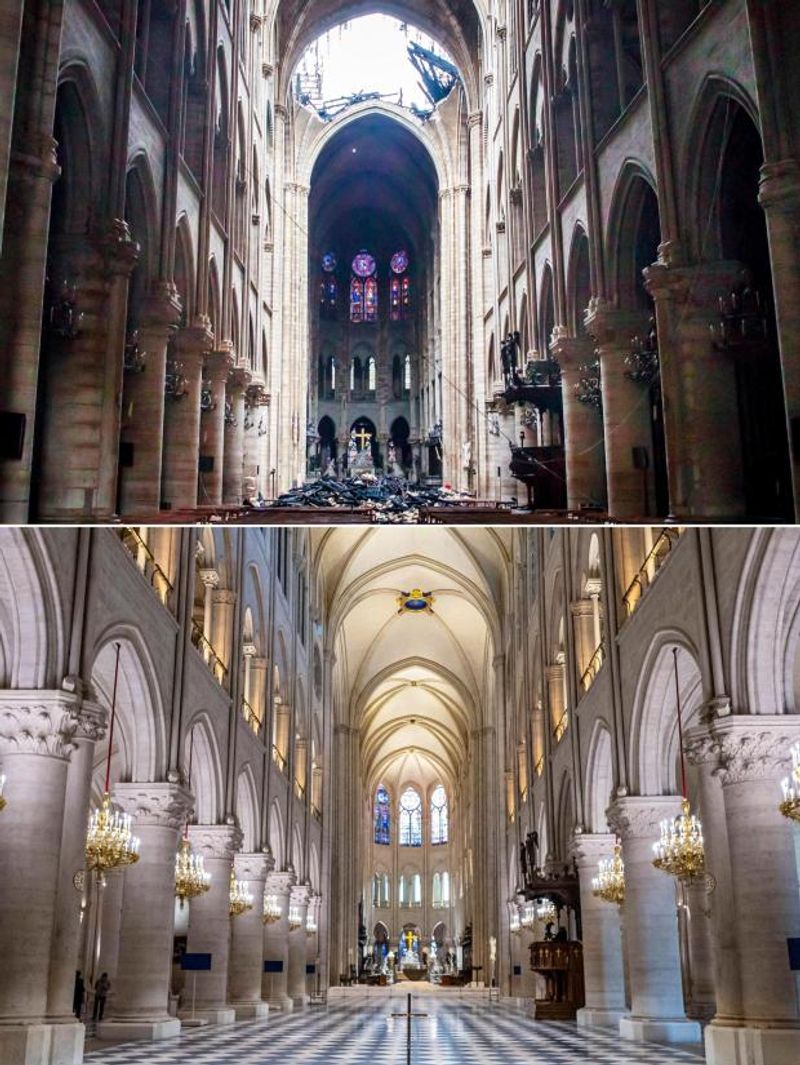
Notre-Dame Cathedral, a Gothic masterpiece, suffered devastating fire damage in 2019. Restoration efforts have since focused on repairing the roof and iconic spire, symbolizing resilience and renewal.
The cathedral’s restoration combines historical techniques with modern technology, aiming to restore it to its former glory. Paris awaits the day when its beloved icon stands complete again.
Did you know? The spire was originally added in the 19th century by architect Eugène Viollet-le-Duc, and its restoration remains a challenge for modern craftsmen.
Great Wall of China, China
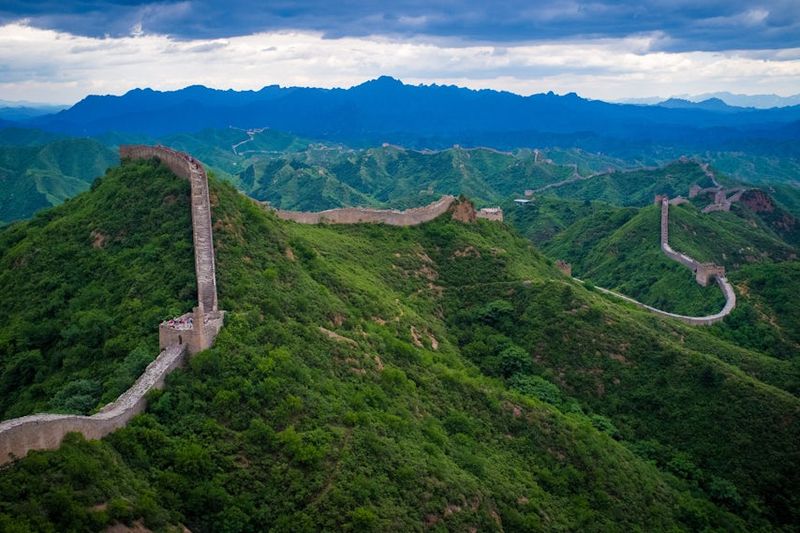
The Great Wall of China, an engineering marvel, stretches over 13,000 miles. Extensive restoration has been undertaken to preserve its history and grandeur. Erosion and human activity have posed significant challenges.
Restored sections allow visitors to walk along paths once tread by ancient soldiers, offering stunning views of the surrounding landscape. The wall’s enduring presence is a testament to Chinese innovation.
Fascinating fact: Some portions of the wall were built as early as the 7th century BC, illustrating its long-standing significance in Chinese history.
Taj Mahal, India
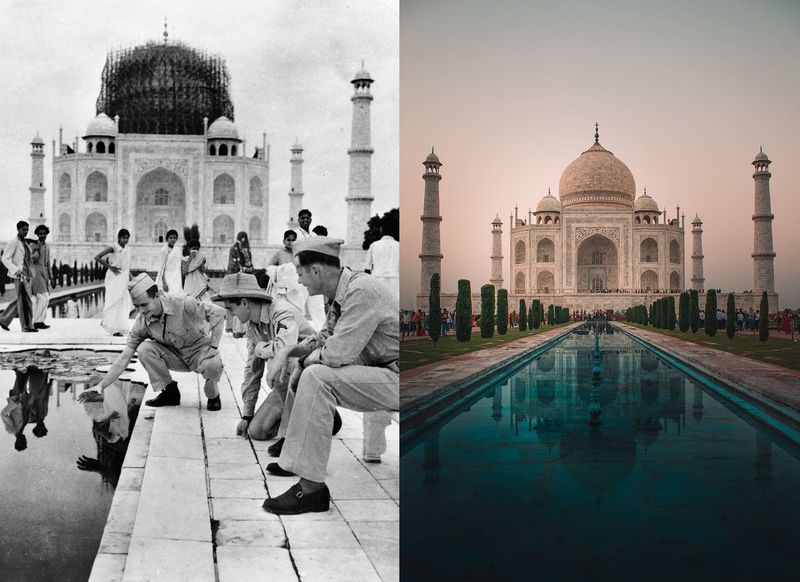
The Taj Mahal, a symbol of love, faces the ravages of time and pollution. Restoration efforts aim to preserve its pristine white marble and intricate artistry.
The use of natural cleaning agents and careful restoration techniques ensure that its beauty endures for future generations. The mausoleum’s serene presence continues to inspire awe and admiration.
Insightful note: The Taj Mahal was built by Emperor Shah Jahan in memory of his beloved wife, Mumtaz Mahal, and is considered one of the New Seven Wonders of the World.
Hagia Sophia, Turkey
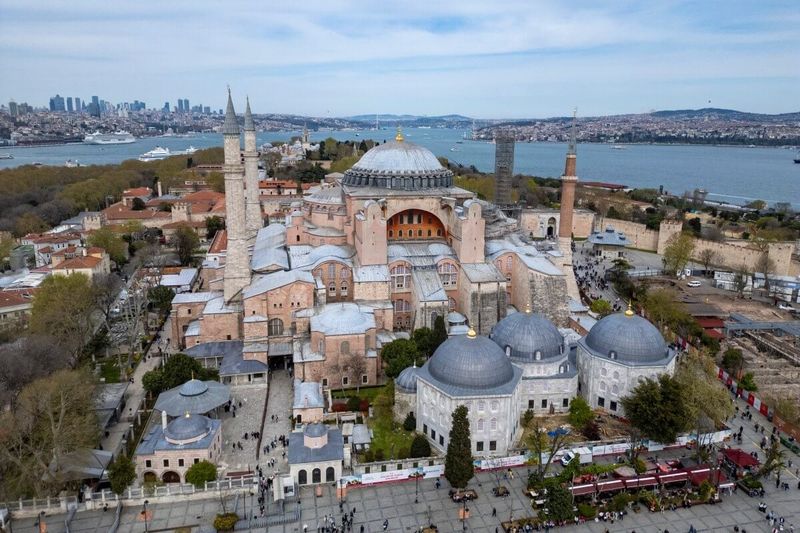
Hagia Sophia, a masterpiece of Byzantine architecture, has served as a cathedral, mosque, and now a museum. Restoration efforts have preserved its stunning mosaics and architectural grandeur.
The building’s layered history reflects the cultural convergence of East and West. Visitors marvel at its vast dome and intricate decoration, testament to human creativity.
Interesting fact: Hagia Sophia’s dome was considered an engineering marvel of its time, appearing to float weightlessly above the nave.
Petra, Jordan
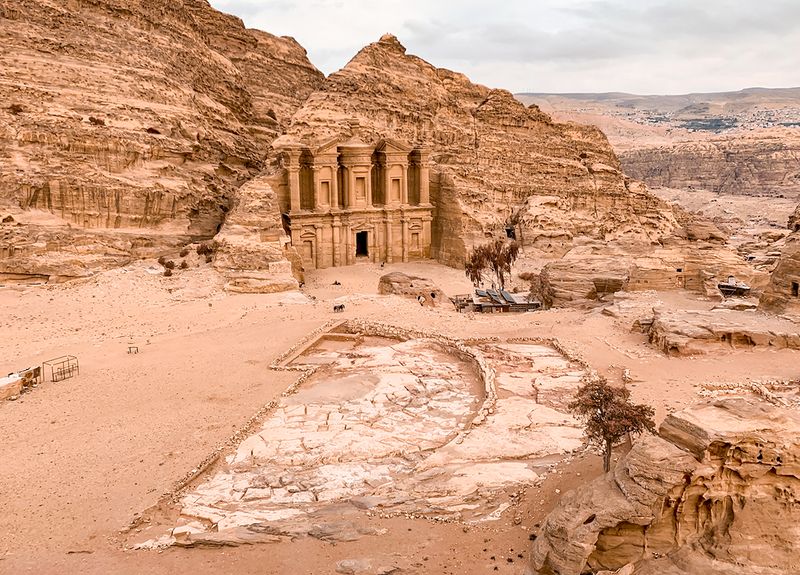
Petra, the ancient Nabatean city, is famous for its rock-cut architecture. Its restoration focuses on preserving the intricate carvings that define this archaeological wonder.
Visitors traverse the Siq, a narrow gorge that leads to the iconic Treasury, experiencing a journey through time. The efforts ensure Petra remains a captivating testament to ancient ingenuity.
Did you know? Petra was rediscovered in 1812 by Swiss explorer Johann Ludwig Burckhardt, hidden from the Western world for centuries.
Stonehenge, England
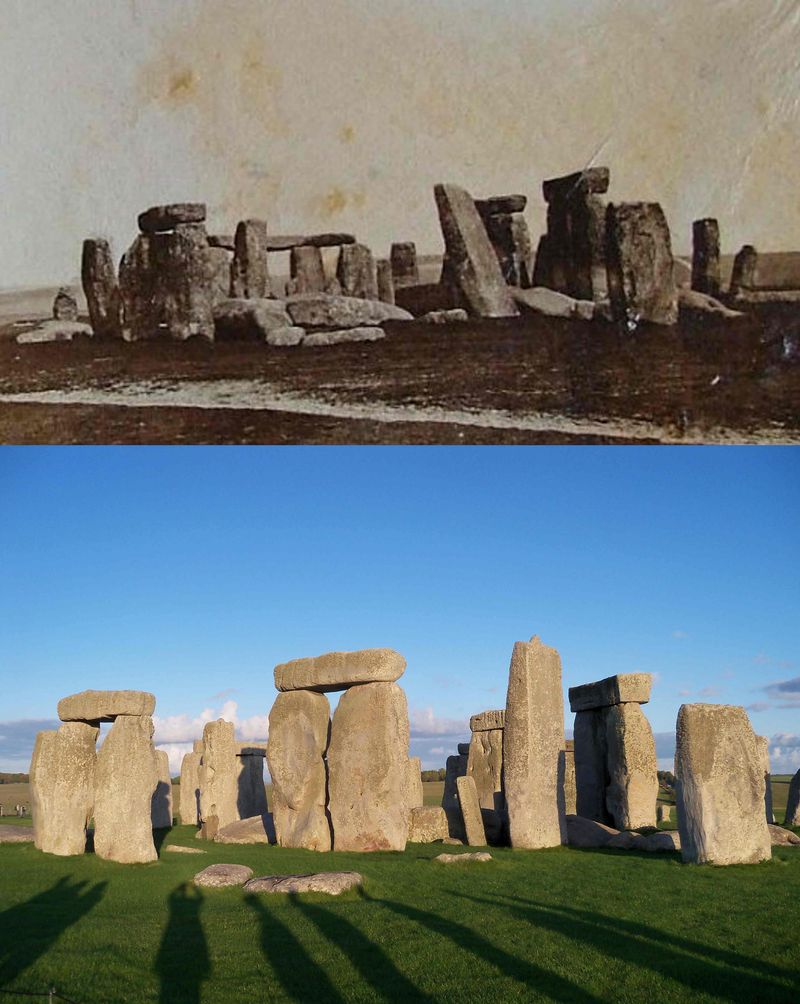
Stonehenge, a prehistoric monument, has puzzled archaeologists for centuries. Restoration efforts focus on stabilizing its iconic stones and preserving its enigmatic aura.
The mystery of its purpose continues to fascinate visitors, who gather to witness its majesty during solstices. Its enduring cultural significance makes it a symbol of Britain’s ancient past.
Intriguing trivia: Some of the stones were transported from Wales, over 150 miles away, demonstrating the monument’s significance to its builders.
Alhambra, Spain
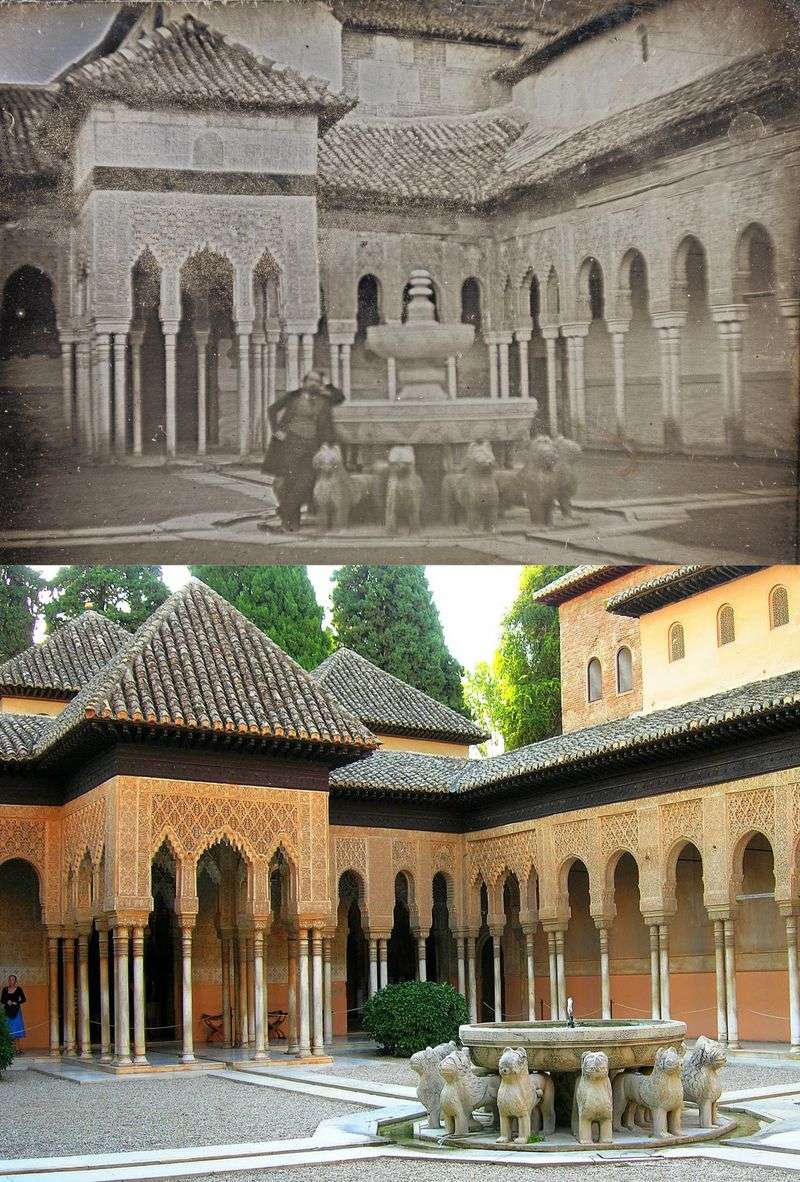
The Alhambra, a UNESCO World Heritage site, is a stunning example of Moorish architecture. Restoration projects aim to preserve its intricate tilework and lush gardens.
Visitors are enchanted by its vibrant colors and intricate details, experiencing a glimpse into a rich cultural heritage. The Alhambra’s beauty endures as a symbol of Spain’s diverse history.
Fun fact: Washington Irving’s “Tales of the Alhambra” helped revive interest in this historic site during the 19th century.
The Forbidden City, China
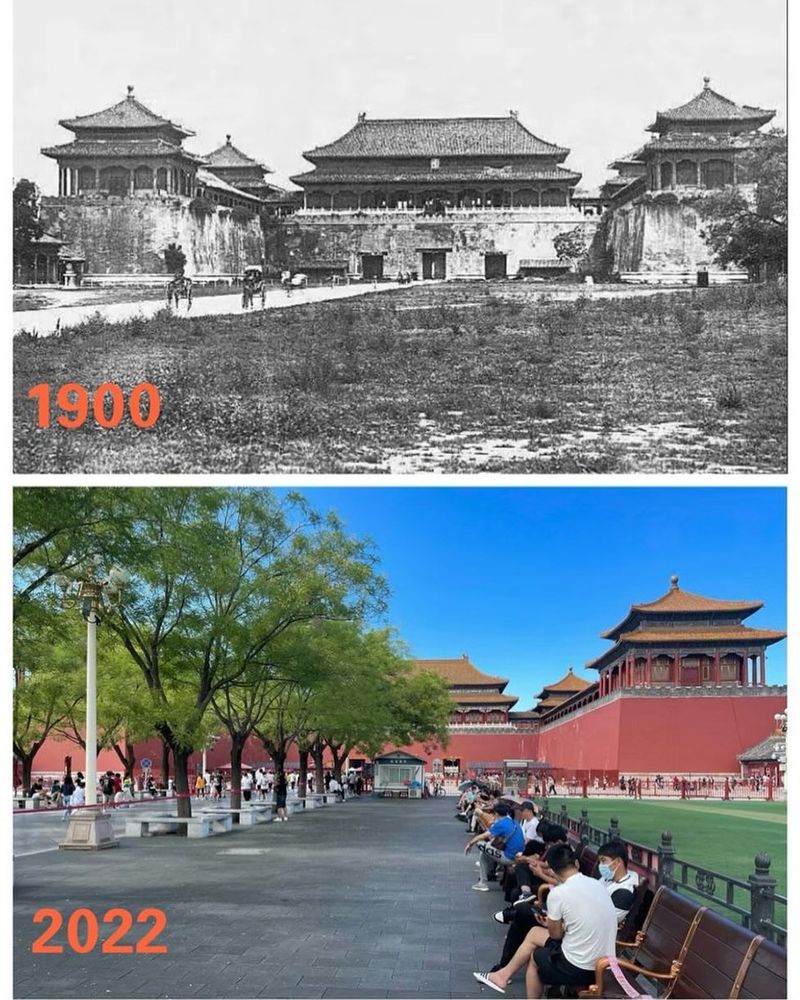
The Forbidden City, once home to Chinese emperors, is a marvel of ancient architecture. Restoration efforts focus on preserving its palaces and elaborate decor.
Exploring its vast courtyards and halls offers a journey through China’s imperial past. The restoration ensures its legacy as a cultural treasure survives.
Historical insight: The Forbidden City contains over 980 buildings, emphasizing its role as a symbol of China’s vast imperial history.
Chichen Itza, Mexico
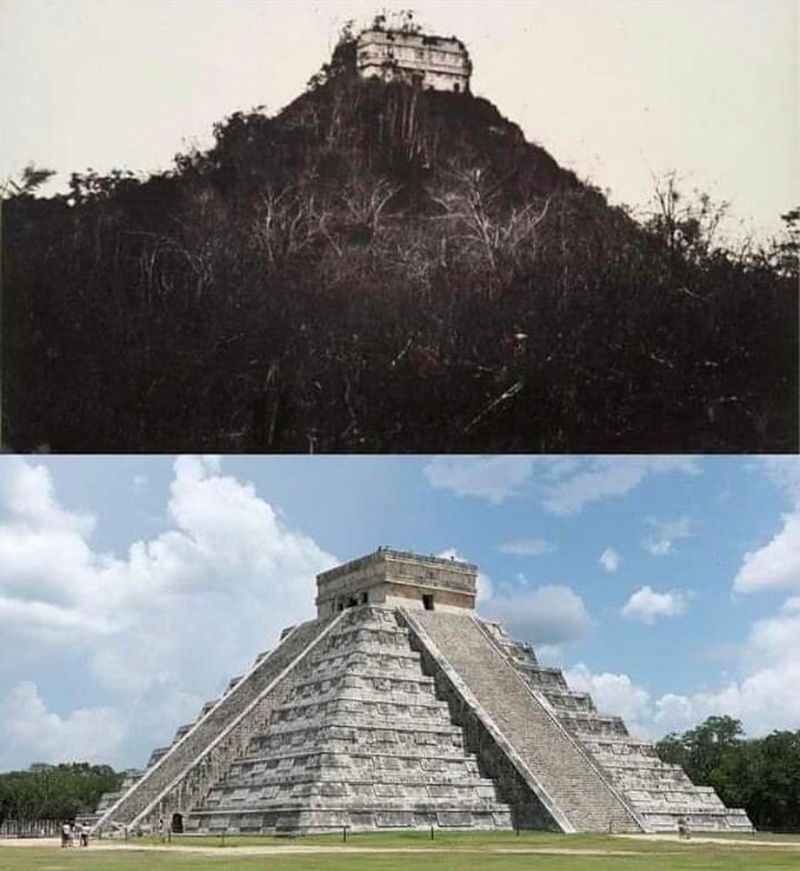
Chichen Itza, a testament to Mayan civilization, stands as an architectural marvel. Restoration has preserved its iconic pyramid and intricate stone carvings.
The site’s alignment with celestial events showcases the Maya’s advanced knowledge of astronomy. Visitors explore its ancient ball courts and observatories, marveling at its historical significance.
Cultural tidbit: The Pyramid of Kukulkan at Chichen Itza creates a shadow of a serpent during equinoxes, symbolizing the feathered serpent god.
Acropolis of Athens, Greece
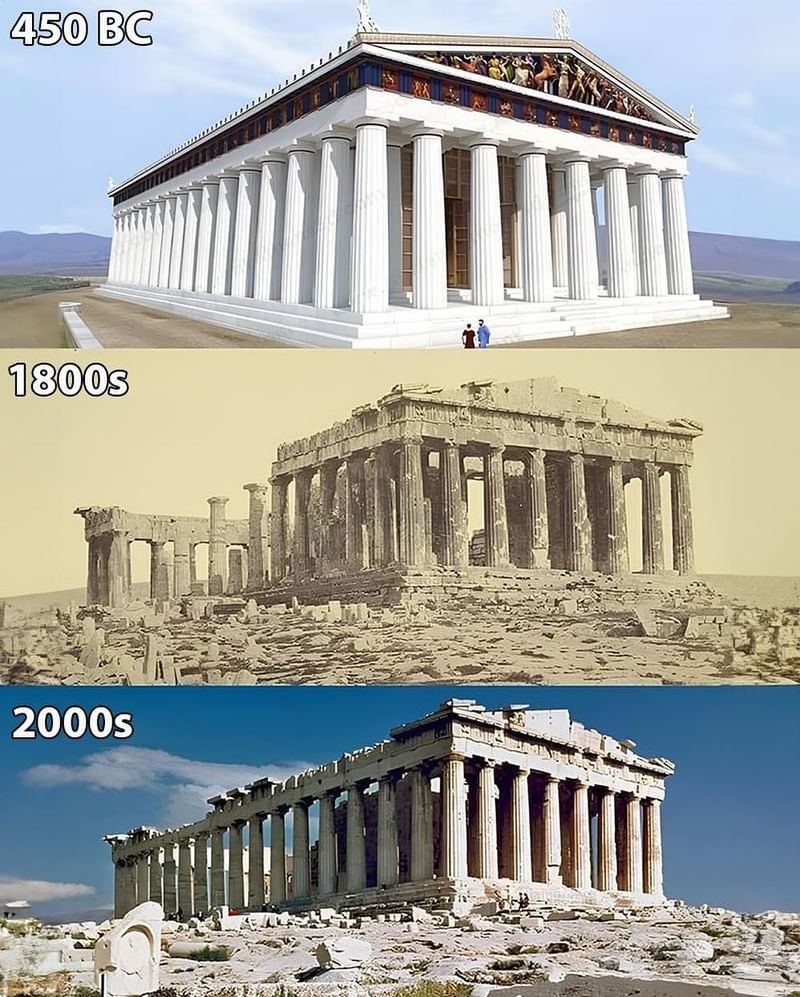
The Acropolis of Athens, a symbol of ancient Greek civilization, has undergone extensive restoration. Preservation efforts focus on ancient structures like the Erechtheion and the Parthenon.
Visitors experience the birthplace of democracy and philosophy, surrounded by breathtaking views of Athens. The Acropolis continues to inspire as a beacon of human achievement.
Fascinating note: The Acropolis once housed a giant statue of Athena, the goddess of wisdom, reflecting its cultural and religious significance to the Athenians.
Versailles Palace, France
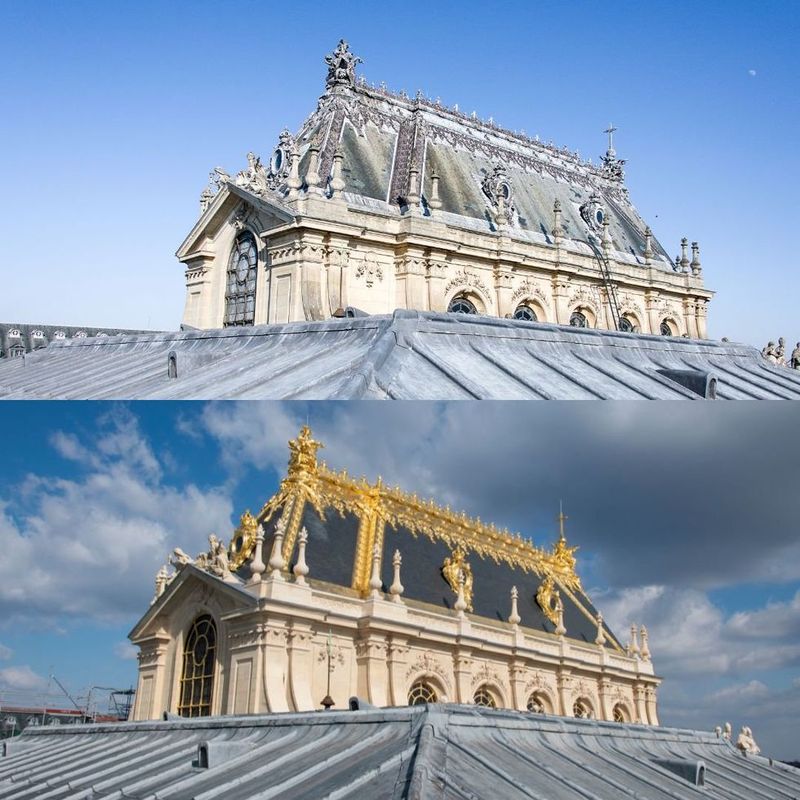
Versailles Palace, a symbol of French royalty, boasts opulent architecture and expansive gardens. Restoration projects aim to preserve its grandeur and historical value.
Strolling through its halls and gardens offers a glimpse into the lavish lifestyle of French monarchs. The palace’s timeless elegance remains a cultural treasure.
Quirky fact: The Hall of Mirrors in Versailles contains 357 mirrors, reflecting the opulence and grandeur of Louis XIV’s reign.
Easter Island Statues, Chile

The Moai statues of Easter Island, shrouded in mystery, are an iconic symbol of Polynesian culture. Restoration efforts focus on preserving these enigmatic figures and understanding their origins.
The statues, carved from volcanic rock, stand as guardians of the island’s past. Visitors ponder the skill and purpose behind their creation.
Intriguing detail: The Moai statues were originally placed to face inland, perhaps watching over the island’s inhabitants and their activities.
The Kremlin, Russia
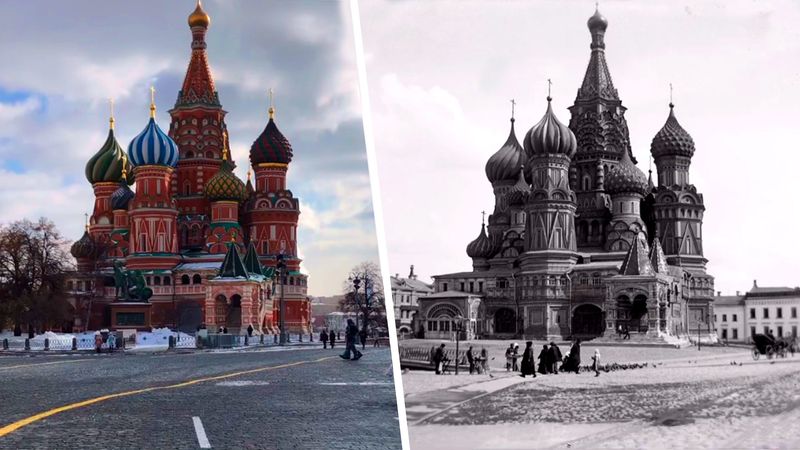
The Kremlin, a symbol of Russian history and power, has undergone significant restoration. Efforts focus on preserving its ancient forts, palaces, and cathedrals.
Visitors delve into Russia’s complex past, exploring its blend of architectural styles and cultural influences. The Kremlin remains a central figure in Russian identity.
Did you know? The Kremlin’s name means “fortress inside a city,” reflecting its historical role as a fortified center of power.
Sydney Opera House, Australia
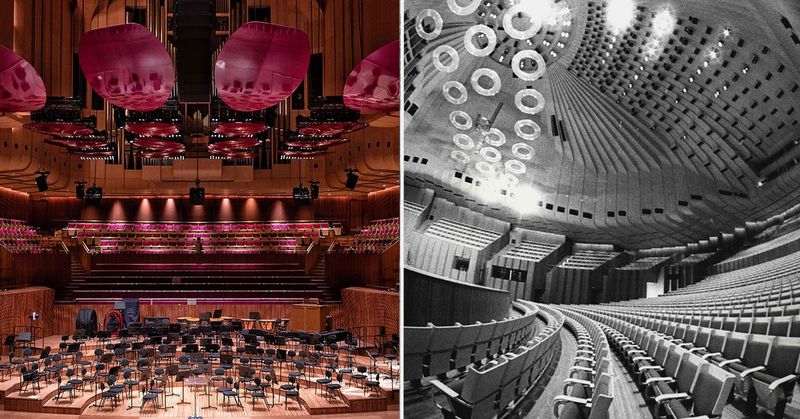
The Sydney Opera House, an icon of modern architecture, stands proudly in Sydney Harbour. Restoration efforts have focused on maintaining its unique design and acoustics.
The opera house hosts performances that captivate audiences worldwide, set against breathtaking views of the harbor. Its innovative structure continues to inspire architectural marvels.
Fun fact: The Opera House’s design, inspired by nature, resembles a series of seashells or sails, capturing the spirit of Sydney’s maritime heritage.

